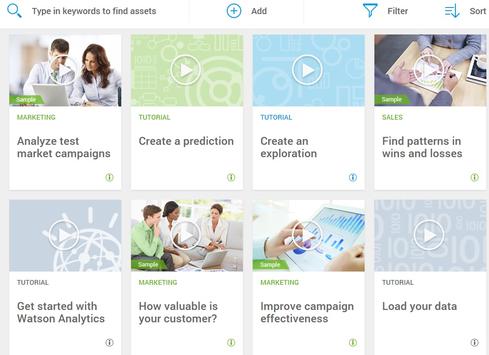IBM opens beta use of its cloud-based, freemium data analysis service. Will natural-language interaction simplify number crunching?


Cloud Storage: 8 Ways You're Wasting Money
Cloud Storage: 8 Ways You're Wasting Money (Click image for larger view and slideshow.)
Watson Analytics, the natural-language-based number-crunching aid that IBM announced in September, is now available for trial use in the cloud, the company announced on Thursday.
Watson Analytics will let users upload their data and start exploring by typing questions in English. The service streamlines and simplies what's typically a complicated process, IBM said, by automatically spotting interesting correlations and exceptions within the data you load. It also suggests data-cleansing steps and the best data-visualization approaches to use in various analysis scenarios.
The promises must be compelling, as more than 22,000 would-be number crunchers have registered to use the beta service, according to IBM. For now it's a beta sandbox that's entirely free. Once the freemium service is generally available, IBM said it will start with free use for individuals, who will have access to all data refining, visual analysis, predictive, and collaborative capabilities.
[Want more on Salesforce.com's data-analysis simplification approach? Read Salesforce.com Wave Analytics Cloud: Pros & Cons.]
IBM has not offered general-release dates or pricing details, but the company said premium users of the service will be able to analyze higher volumes of data and more data sources, including live links to sources such as data warehouses and cloud sources.
Despite the Watson branding, the service is not the same as IBM's cognitive computing technology, so training is not required, but IBM said the service will "learn" about customer data sources over time. Behind the scenes, the service combines technologies that IBM has been working on for some time.
InfoSphere Data Refinery services, for example, are used to assess the data that you upload and automatically suggest corrections, such as deleting duplicates or merging records that appear to be related. A Catalyst Engine developed for IBM's SPSS software automatically find correlations and trends in data. Cognos Project Neo technology come into play to automatically suggest which type of visualization to use to best illustrate a trend, outlier, correlation, or other trait.
IBM isn't the only vendor trying to streamline the data-analysis process. Qlik recently released simplified Qlik Sense data-visualization software while Salesforce.com is promising simple, four-button analysis in mobile apps through its Wave Analytics Cloud. And Microsoft has tried to improve on its widely used Excel spreadsheet with complementary, cloud-based tools including Power BI.
These latest efforts show that BI and analytics software never lived up to the promise of "democratizing data analysis."
Apply now for the 2015 InformationWeek Elite 100, which recognizes the most innovative users of technology to advance a company's business goals. Winners will be recognized at the InformationWeek Conference, April 27-28, 2015, at the Mandalay Bay in Las Vegas. Application period ends Jan. 16, 2015.
About the Author(s)
You May Also Like







